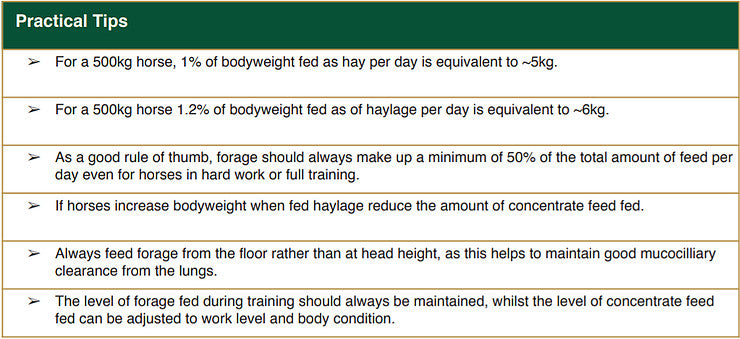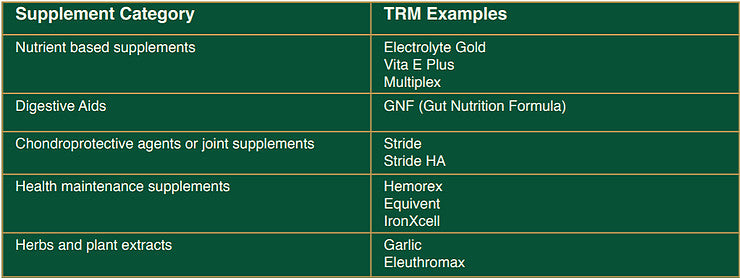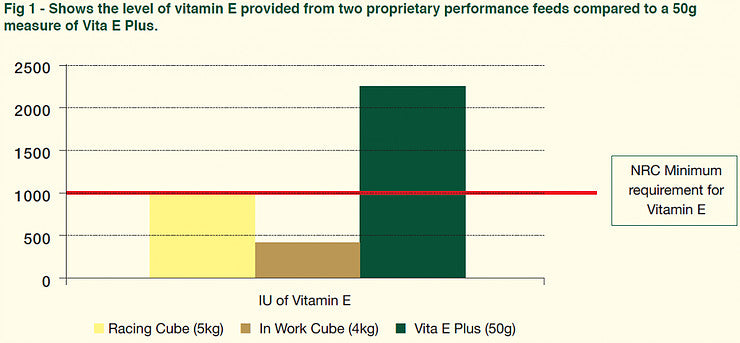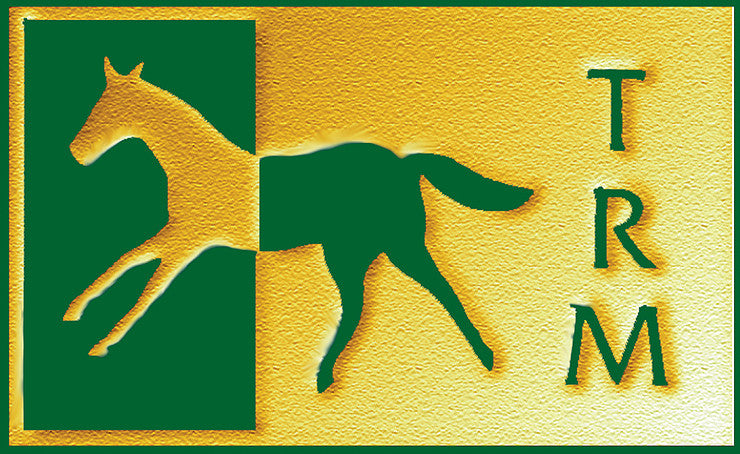Your Cart is empty
Irrespective of the discipline, exercise performance involves the fulfillment of genetic potential or ‘innate talent’. Whether a horse ultimately reaches its true performance potential will depend on many factors including a successful training program, availability of a talented rider or jockey, as well as opportunity in terms of the race or competition.
Nutrition can also have an impact on exercise performance and whilst good feeding will not transform a horse with little talent into a world beater, it will help to ensure that each horse reaches its maximum performance potential.
In order to provide the best nutritional support it is important to appreciate the goals of any performance diet. Whilst there are likely to be small differences in these between the various equestrian disciplines the basic theme is the same:
- Satisfy daily energy requirement.
- Provide an appropriate source of energy for the respective discipline.
- Ensure feed type and feeding practices support digestive health.
- Provide adequate intake & balance of micronutrients to optimise metabolism & performance.
A diet that satisfies the requirement for energy on a daily basis is obviously crucial for any performance horse. This is important as feed is needed to ‘top up’ all of the various energy stores in the horse’s body including the carbohydrate and fat stores. Daily energy requirement is directly affected by bodyweight and not just the level of exercise undertaken on a daily basis.
Table 1 – Shows the major energy stores in the body that must be replenished from the diet.

1. Know your horses’ bodyweight
One of the key factors in determining the required daily energy intake is bodyweight. Bodyweight can be established using a weighbridge, or can be estimated easily using a weigh tape. Recording bodyweight on a regular basis is a good management practice that is useful for helping to maintain bodyweight and optimise feed intake.
Bodyweight is one of the best indicators of the appropriateness of the diet. Where energy intake is insufficient either because feed intake is too low, or because the energy density of the ration is too low for the level of daily activity then bodyweight will decrease and the horse will eventually physically appear to be losing weight. Conversely, if feed intake is too high or the energy density of the ration too great for the level of exercise then the horse’s bodyweight will increase gradually and they will soon become overweight.
Feed intake should always be adjusted either upwards or downwards to maintain optimum body weight. The amount and level of exercise undertaken should be dictated by your training requirements not body condition and exercise should certainly not be used to compensate for feeding too much.

Body Condition Scoring can also be useful in helping to maintain an ideal bodyweight, as it formalises, a ‘horseman’s’ ability to assess body condition by eye. It is a simple method that can be routinely practised and recorded along with regular measurements of bodyweight.
2. How much should we feed?
APPETITE
Horses will naturally consume between 2.0 to 2.5% of their bodyweight in terms of feed dry matter per day and this includes both the forage and concentrate portion of the diet. The dry matter content of feedstuffs is equivalent to the ‘true dry weight’ if we were able to remove all of the water contained within. Most conserved forages (hay and concentrate feeds will have a dry matter content of between 85 and 90%, whilst haylage can be lower (60-70%).
A GOOD STARTING POINT
If we assumed that all feeds were 100% dry matter then we should expect to feed a 500kg horse about 10kg of feed per day (feed plus forage), which is equal to 2% of bodyweight. This is quite a good place to start as an estimate of feed intake, without having to know the dry matter content of your feeds. However, if you are feeding haylage it is more important to know the dry matter content as you will need to feed more than the respective amount of haylage to compensate for the higher water content.
In general appetite does not change much as the level of exercise increases, therefore the increased daily energy requirement of training and racing or competition can only be met by increasing the ENERGY DENSITY of the feeds. This is achieved by feeding forage and concentrate feeds with a higher feed value or energy content per kilogram.
REDUCED APPETITE
It is, however, well known that appetite in some individual horses can reduce during training compared to their non trained counterparts and as a result it can be more difficult to maintain sufficient energy intake and maintain bodyweight and condition. These horses are quite often fussy or picky feeders. In this instance, energy density must be increased still further in order to satisfy daily energy requirement within essentially a lower amount of feed.
Table 2 – Steps to take to ensure adequate energy intake for fussy feeders.

3. Why feeding little & often is so important
Horses are grazing animals that in their natural environment would eat almost constantly throughout the day on a little and often basis. This method of feeding is very sympathetic to the structure of their digestive tract. Horses have a relatively small stomach and so are not designed for large meals. They also have a very large and well developed hindgut or large intestine, which is very efficient at fermenting fibrous feedstuffs with the help the a large and diverse population of bacteria and other microflora that are present. The horse’s small intestine, which is situated between the stomach and hindgut, is the region where enzymatic digestion of feed components takes place. Most of the dietary starch, sugars and protein as well as oil should be digested in the small intestine, maximising the overall benefit to the horse.
There are, however, many factors that influence the proportion of particularly starch, sugar and protein that is digested in the small intestine, the most significant being meal size. The size of a meal influences firstly how long the food stays in the stomach and then how fast it passes through the small intestine. Feeding large meals reduces the amount of time food spends in the stomach, which decreases the initial breakdown of food by stomach acids. Feeding a large meal will also increase the speed at which food passes through the small intestine and so reduces the opportunity for enzymatic or chemical breakdown of starches, sugar, oil and proteins here.
This ultimately means that a greater proportion of particularly starch and protein will reach the hind-gut, where they can be fermented by a certain sub-population of the resident bacteria. Fermentation of starch and protein in the hindgut is less beneficial to the horse, both in terms of energy delivery and also where protein is concerned in the supply of amino acids. Excessive fermentation of starch in the hindgut can also contribute to the development of serious health issues in horses such as colic, laminitis, colitis and diarrhoea, which can arise. When the acidity in the hindgut is excessively increased there is an associated disruption to the normal bacterial balance.
Large meals can also therefore reduce overall feed utilisation as the faster passage through the small intestine means that there is less opportunity for the absorption of important macro-minerals such as calcium, micro-minerals such as copper and selenium and vitamins such as vitamin E and the B vitamins.
PRACTICAL TIPS
- Try to avoid feeding a single meal that exceeds 2.5kg.
- Where more feed is required, increase the number of feeds per day rather than meal size.
- For horses in light work -2 meals per day is appropriate.
- For horses in hard work or full training 3-4 meals will be required.
4. Adequate forage intake is essential

Forage should not be thought of as a simply a fibrous filler, as it makes a significant contribution to the performance horse’s diet. A minimum quantity of forage in the diet is important to help maintain digestive health and to support the balance of beneficial bacteria in the hindgut. There is evidence that maintaining a generous level of forage in the diet helps to lessen the negative impact that starch fermentation has on the microbial balance in the hindgut.
In addition, there is also evidence that maintaining good forage intake can reduce the risk of stereotypic behaviours such as crib biting or wind sucking, or the development of gastric ulceration.
As a grazing feeder, horses produce gastric acid continuously and rely upon the physical presence of food in the stomach and on the bicarbonate content of saliva to protect the vulnerable non glandular gastric mucosa from the ravages of gastric acid and other components of the gastric juices. Maintaining adequate forage intake helps to reduce the time for which the stomach is empty and therefore exposed to gastric acid, but also significantly increases the amount of chewing and hence saliva production.
Forage is usually fed in the form of hay or haylage, but also includes any alfalfa based chaffs fed separately or added to the concentrate feed.
As a guide, horses fed hay should be fed a minimum of 1% of their bodyweight in the form of forage, but for haylage this needs to be slightly higher (~1.2%) to compensate for its lower dry matter (higher water content).

Hay and haylage should always as far as possible be free from significant dust, moulds (and mycotoxins) or yeast, which can be detected through laboratory analysis. Moulds can have a severe impact on respiratory health, particularly those of the Aspergillus species. Poor harvesting and storage conditions can increase the mould burden in hay, whilst the fermentation that occurs in well made haylage will suppress mould formation and growth. The feed value of haylage can also often be higher than that of hay and so adjustments may need to be made to the quantity of concentrate feed fed.

5. Choice of concentrate feed
There are many options to choose from in terms of concentrate feed including manufactured cubes, or coarse mixes or muesli or even straight feedingstuffs. For performance horses nearly all of these feeds will incorporate some high starch containing cereal including oats, barley, maize or wheat. Starch is an important component of the diet of a performance horse, as it provides a readily available source of glucose to fuel the muscles and other tissues of the body and in addition it represents the most efficient precursor or building block for the formation of muscle and liver glycogen, which are both important carbohydrate stores in the body.
The structure of the starch molecules in different cereals varies, which means that its digestion in the small intestine can also be increased or reduced depending on the cereal source. Oat starch is digested easily in the small intestine, whilst the starch in uncooked barley has a low digestibility in the small intestine which will result in an increased but undesirable flow of starch to the hindgut. Cooking increases the digestibility of starch in the small intestine by unravelling or gelatinising the starch molecules.
Surprisingly, mechanical treatment of cereals such as rolling or clipping have very little effect on starch digestibility in the small intestine. With the exception of oats, all cereals fed to performance horses, whether as straights or as part of a proprietary concentrate feed, should be cooked (micronised, steam flaked) prior to feeding.
More recently, some feeds have been produced which have a lower cereal content and rely on the use of very digestible fibre sources or ‘superfibres’ in combination with increased oil. These feed types are particularly suitable for endurance horses, or those where a low cereal intake is desirable.
6. Maintain palatability with some variation
Palatability and appetite can be an issue in performance horses and some little additions or changes to the diet can help to maintain feed intake as the level of training progresses. Succulents such as carrots and apples can be added to the concentrate feed for variety, which helps to increase the interest value of feeds. Small liquid additions such as molasses, honey or date syrup can also be helpful in this respect. Because the water content of these additions is quite high and the dry matter correspondingly low, their addition should not form part of the calculated weight of feed intake.
7. Water intake is key to avoid dehydration
Performance horses in training can sweat profusely on a regular basis and although we can replace the body salts (electrolytes) lost, the significant volumes of water perspired should not be ignored. Dehydration is the main consequence of inadequate water intake which results in a reduced fluid content in the blood. This means that there is less fluid in the circulation and the heart must pump faster to compensate, resulting in an increased heart rate.
For an endurance horse, this can mean that they fail at a veterinary inspection or for racehorses or sport horses this may mean that they tire more quickly.
Reduced fluid can initially be offset by drawing on the considerable water reservoir within the gastrointestinal tract. However, increasing water absorption from the gut will quickly alter the moisture content of the digesta, which can contribute to the development of gut impaction. In addition, dehydration of only 3-4% of bodyweight has been shown to detrimentally affect performance.
A horse would normally be expected to consume about 45-100 litres of water per day depending on level of exercise, climate and forage intake. Unlike water buckets, automatic drinkers make monitoring daily water intake more difficult unless they incorporate a water meter of some kind. Ad libitum access to clean water is essential and avoiding extreme water temperature is prudent.
8. Changes to the feeding program must be made slowly
Sudden changes to a horse’s diet, for example a change in the batch of hay, or type of concentrate feed, or withdrawal from grazing, increases the risk of colic. There are however, many times during competition or race training where a change in diet is necessary, for example during the transition from stud to training yard or any period of enforced light work or box rest. At this time, changes to horses’ diets should be made slowly, even though this is sometimes difficult to achieve practically, as diet has a significant impact on the microbial balance in the digestive tract.
Bacteria present in the horses’ digestive tract, especially the hindgut, are responsive to the composition of the diet, particularly with respect to the levels of fibre and starch present. Typically, there will be fewer fibre digesting bacteria and more bacteria capable of efficiently fermenting starch to lactic acid in the hindgut of horses fed a high starch ration.

9. Supplements can be very advantageous
Dietary supplements are used widely and support various aspects of equine nutrition and health. They incorporate ingredients ranging from straight-forward vitamins and minerals, to specific substances included to maintain one or more of the bodies physiological processes or structures e.g. the digestive system or joints.


a) Nutrient Based Supplements
Probably the most commonly used nutrient-based supplement is the broad-spectrum vitamin and mineral supplement, which aims to complement a horses’ existing diet and help provide a balanced ration. Other nutrient based supplements may provide a single or two or three individual micro nutrients to address a specific nutrient issue e.g. Vitamin E to support antioxidant function, or Biotin, Calcium and Zinc for hoof horn structure and growth. Electrolytes are also a good example of an important micronutrient based supplement, as most performance diets will be improved through the addition of one or more key electrolytes such as Sodium, Potassium or Chloride.

The level of Vitamin E in manufactured feeds can sometimes not deliver an optimal intake of Vitamin E to support hard work in horses. For a 500kg horse, the NRC recommends a minimum intake of 1000IU/day. However, more recent research suggests that the optimal intake for horses in work may be nearer to 1500 – 2500 IU/day. Table below shows a comparison with the TRM's VitaEPlus.

Most manufactured feeds will provide an adequate level of Biotin for normal metabolism, but the requirement to support improvements in hoof horn quality are generally much higher, and a specialist supplement such as TRM’s Hoofmaker would be required to deliver the desired Biotin level in the diet.

It is, however, important to ensure that the ration remains balanced when using supplements and that an excess of any micronutrient is avoided by not feeding more than one supplement with a common micronutrient content. It is always best to seek advice on this if you are at all unsure. You can always contact Amacron on sales@amacron.com.au for helpful advice in this area.
b) Digestive aids
These supplements usually contain ingredients that aim to maintain normal digestive function and retain a healthy microbial balance throughout the horses’ digestive tract. Products such as TRM’s GNF (Gut Nutrition Formula) also contain specific ‘antacid’ type ingredients such as Calcium Carbonate, Magnesium Hydroxide and seaweed extract to help maintain the integrity of the gastric mucosa, particularly in horses at risk from gastric ulceration. Other ingredients such as prebiotics (fructo-oligosaccharides) provide a food source for beneficial microflora within the digestive tract thus helping to maintain a healthy microbial balance. Amino acids such as Glutamine are added as they represent a major energy source for enterocytes, which are specialised cells found within the digestive tract.
c) Chondroprotective agents or joint supplements
A normal cartilage is essential to maintain a joint’s durability, strength and flexibility. Cartilage is dynamic and in normal circumstances is slowly but simultaneously broken down and renewed. The building blocks for cartilage growth are essential to maintain normal turnover. Some supplements contain nutrients involved in the maintenance of healthy cartilage, and also serve to counteract the destructive inflammatory processes involved in joint disease. Joint cartilage is composed of cells called chondrocytes bathed in a water based matrix that contains an organized network of substances including collagen, protein and glycosaminoglycans (e.g. Hyaluronic Acid and Chondroitin Sulphate). Providing an adequate supply of nutrients to cartilage cells to enable maintenance of the integrity of cartilage is vital. Chondroprotective nutrients including Glucosamine, Chondroitin Sulphate, Methylsulphonylmethane (MSM) and Hyaluronic Acid may help to sustain cartilage turnover in times of stress.
d) Herbal supplements
Herbs and other plants have been used for centuries as nature’s healer with much of the purported evidence for their action being found in historical texts and books. Additionally, many modern drugs for example aspirin, atropine, digitalis were originally discovered and derived from plants, so it is perhaps not surprising that herbal remedies and supplements e.g. Garlic or Siberian Ginseng are widely used for their health benefits.
e) Health supporting supplements
Many supplements contain specific nutrients or groups of nutrients that aim to help maintain health in performance horses, where the risk of conditions such as azoturia, anaemia, airway inflammation or exercise induced pulmonary haemorrhage (EIPH) may be increased.
Many supplements simply provide a more concentrated source of micronutrients to complement the basic diet, whilst others contain specialised nutraceuticals not be found in the remainder of the diet in any appreciable amount. Supplements are often portrayed as a panacea for all of your horse’s ills.
Remember though that they should be viewed as being complementary to your horses’ diet offering a holistic approach to maintaining health.
TRM Supplements are available from Amacron Equine in Australia
And Amacron New Zealand - for New Zealand.



